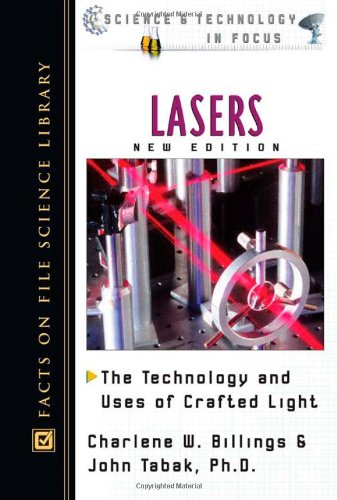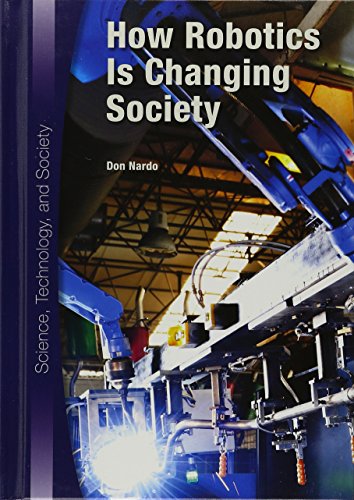-
Buildings & Structures
Andrew Solway
Paperback (Raintree, Aug. 1, 2011)This addition to the visually stimulating Sci-Hi series looks at the application of science and new technologies to the field of buildings and structures, from the tallest towers to dams, stadia, and canals. It looks at new materials, discoveries, and inventions, and assesses their environmental impact. V
V
-
Nikola Tesla: Harnessing Electricity
Lisa Yount
Library Binding (Chelsea House Pub, Oct. 1, 2011)As a scientist and businessman, Nikola Tesla saw his fortunes reverse as many times as his alternating current method of conducting electricity. Born in Croatia, Tesla found his way to America where he met fellow inventor Thomas A. Edison. However, the two brilliant men did not share similar methods of experimentation and soon parted ways. Tesla soon drew the attention of businessman George Westinghouse with his alternating current (AC), a method of delivering electricity more efficiently and over greater distances than Edison's direct current (DC). With Westinghouse's support, Tesla's method soon became dominant in the industry. Emboldened, Tesla set up a laboratory in Colorado, where his electricity experiments soon attracted attention both good and bad. Though this was where he built his famous Tesla coil, which turns a small amount of electricity into a great spark, Tesla also claimed here that he received messages from aliens in outer space, discrediting his legitimate advances. Again, Tesla's luck seemed to alternate on a positive course with backing from J.P. Morgan to build a station on Long Island to broadcast messages and information wirelessly to the world. However, the tower soon ran over budget, and Tesla's fortunes had fallen again. Today, Tesla's legacy is on the rise his insights and theories about wireless transmission and communication are hardly out of place in a world dominated by cell phones and Wi-Fi. Nikola Tesla outlines what biographers have discovered about Tesla and explores both his amazing achievements and his stunning failures. Z+
Z+
-
Rosalind Franklin: Photographing Biomolecules
Lisa Yount
Library Binding (Chelsea House Pub (Library), Oct. 1, 2011)Growing up in the interwar period in London, Rosalind Franklin was determined to become a scientist, defying her father's wishes. After World War II, Franklin worked at the French government's central chemical research laboratory, where she learned X-ray crystallography. This technique relies on a beam of X-rays that passes through a crystal and strikes photographic film, letting a trained reader to see a three-dimensional arrangement of atoms. Her training in this field led to opportunities to photograph DNA, which allowed researchers to study in depth this complex molecule and to come to conclusions about its structure, including scientists James Watson and Francis Crick. Though Franklin proposed several conclusions similar to Watson and Crick's, Franklin was not sufficiently credited for her photographic work that led to their discovery. In 1958, this unsung scientist's life was cut short at age 37 by ovarian cancer. Watson and Crick later won a Nobel Prize for their DNA research, but credit escaped the late scientist with the artist's eye for capturing complex atoms on film. Rosalind Franklin delves into this woman's remarkable career and her contributions to the study of human biology. Z+
Z+
-
Optics
Sean M Grady, Kyle Kirkland
Hardcover (Facts on File, Oct. 1, 2006)The energy of light carries much of the world's information from one place to another. Surgeons, dentists, dermatologists, and other medical professionals use light in its various forms to heal or repair the body. Business and industry rely on optical scanners and electric eye detectors to monitor production quality, maintain security, and keep track of sales and inventory. Simple electric signs advertise products and services and high-tech bundles of hair-thin glass fibers send voices and data around the world. All this and more is done with the power of light. Optics is one of the fundamental disciplines that has driven the technological and communications revolutions of the 20th century, and it literally defines what the world looks like today. an overview of the theory of light as it stands today, in language that students will find both interesting and easy-to-follow. Covering the history of optics as a science and as a technology, as well as showing the ways in which light has been put to work as a tool, this book discusses three of the great triumphs of optical physics in the 20th century in detail - the creation of laser light; the development of fiber optics and optical-based communication; and the progression towards optical computing, which is seen by many computer experts as the next great phase in information technology.
-
Holt Science and Technology: TCAP Test Prep Workbook Grade 7
RINEHART AND WINSTON HOLT
Paperback (HOLT, RINEHART AND WINSTON, )There are moments in which every man is apt to imagine that the history of his own life is the most important of all histories. The gloom and sunshine with which my short existence has been chequered lead me to suppose that a narrative of these vicissitudes may be interesting to others as well as to myself. Z
Z
-
Biohazards
Sean M Grady, John Tabak
Hardcover (Facts on File, March 1, 2006)Some of the most significant and potentially devastating dangers to human and animal life come from sources we cannot see without the help of microscopes. Viruses, bacteria, and other microorganisms have been a troubling presence in the world probably from the time multicellular life first appeared. As part of the new Science and Technology in Focus series, Biohazards covers the history of how these extremely powerful microscopic invaders have plagued the human race and how humans have responded to these attacks. Comprehensive and up-to-date, this volume looks at the recent resurgence of diseases that were once thought vanished, such as tuberculosis and staphylococcus. It also explores the renewed threat of biological warfare in the form of bioterrorism following the attacks on the World Trade Center and the Pentagon on September 11, 2001. Using the most recent information available, Biohazards covers other important topics such as the recent anthrax scare, the ongoing battle against HIV/AIDS, and the recurring outbreaks of extremely deadly diseases such as Ebola.
-
Lasers: The Technology and Uses of Crafted Light
Charlene W Billings, John Tabak
Hardcover (Facts on File, Oct. 1, 2006)Dynamic contrast-enhanced MRI is now established as the methodology of choice for the assessment of tumour microcirculation in vivo. The method assists clinical practitioners in the management of patients with solid tumours and is finding prominence in the assessment of tumour treatments, including anti-angiogenics, chemotherapy, and radiotherapy. Here, leading authorities discuss the principles of the methods, their practical implementation, and their application to specific tumour types. The text should is a single-volume reference that covers all the latest developments in contrast-enhanced oncological MRI.
-
Cars and Motorcycles
John Townsend
Library Binding (Raintree, July 1, 2011)This addition to the visually stimulating Sci-Hi series looks at the application of science and new technologies to cars and motorbikes and how they affect our lives. It looks at new materials, discoveries, inventions, and assesses their environmental impact.
-
How Mobile Devices Are Changing Society
Harry Henderson
Hardcover (Referencepoint Pr Inc, Aug. 1, 2015)Looks at scientific and technological advances in smart phones and mobile devices, as well as their impact on society and how future developments may play out.
-
Robotics
Mason Crest
Hardcover (Mason Crest Publishers, Jan. 1, 2019)The dream of making machines think has been part of science fiction for more than a century. The reality of such automated machines is only now coming true. The science of robotics combines computer power, engineering excellence, and true creativity to build machines that will make our lives easier. Inside, find out about the most important advances and meet the most fascinating robots in the world. S
S
-
ROBOTICS, INSIDE SCIENCE READERS
Julia Wall
Perfect Paperback (Creative Teaching Press Inc., Jan. 30, 2009)Part of a 24-book series that covers the four main branches of sciencephysical science, life science, earth and space science, and science and technology, and covers essential content standards. Students will build their scientific knowledge, increase their content vocabulary, and sharpen critical nonfiction comprehension skills. Books are 6 5/8" x 9 1/8" Q
Q
-
How Robotics Is Changing Society
Don Nardo
Hardcover (Referencepoint Pr Inc, Aug. 1, 2015)Looks at scientific and technological advances in the field of robotics, as well as its impact on society and how future developments may play out.